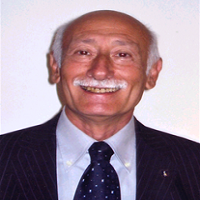X-Ray Fluorescence Computed Tomography Imaging of Nanoparticles and Recent Advances in Biomedical X-ray Fluorescence Imaging
Keywords:
X-Ray Fluorescence, Imaging, Nanoparticles, Biomedical X-rayAbstract
There are a number of well-established methods in both preclinical and clinical uses of X-rays for non-invasive imaging, including computed tomography and tomographic imaging. Quantitative mapping of various elements in samples of interest is made possible by X-ray fluorescence analysis, while projection radiography offers anatomical information. So far, the technique has mainly found use in the material, archaeological, and environmental sciences for elemental identification and quantification; however, the application in the life sciences has been severely constrained by intrinsic spectral background problems that arise in larger objects. Multiple Compton-scattering events in the target objects provide this background, which severely restricts the minimum detectable marker concentrations that may be achieved. In this article, we take a look back at X-ray fluorescence imaging's (XFI) past, present its current and future promising preclinical applications, and predict its eventual clinical translation, which will be possible by lowering the aforementioned intrinsic background using specialised algorithms and new X-ray sources. Monochromatic synchrotron x-rays are used in conventional x-ray fluorescence computed tomography (XFCT) in order to simultaneously find the concentration and spatial distribution of different elements, such metals, in a sample. It would appear, however, that in a conventional laboratory environment, the synchrotron-based XFCT method is not appropriate for in vivo imaging. To the best of our knowledge, our study is the first to show that XFCT imaging of a small object (about the size of an animal) with low concentrations of gold nanoparticles (GNPs) employing x-rays from the polychromatic diagnostic energy range is possible. To be more precise, we built a polymethyl methacrylate (PMMA) phantom that resembles a small animal's internal organs and tumours by filling two cylindrical columns with saline solution containing 1 and 2 weight percent (wt) GNPs, respectively. After suitable x-ray beam filtering and detector collimation, the phantom was scanned using an XFCT under a pencil beam geometry with a microfocus 110 kVp x-ray beam and a cadmium telluride (CdTe) x-ray detector. With contrast levels inversely proportional to gold concentration, the two GNP-filled columns were clearly visible in the reconstructed images. However, scanning duration is a major reason why the present pencil-beam implementation of XFCT is impractical for commonly used GNPs in in vivo imaging tasks. However, it is still possible to see things smaller than the current phantom size using a combination of several detectors and a small number of projections. The present study proposes various ways to alter the existing XFCT configuration, including using a quasi-monochromatic cone/fan x-ray beam and XFCT-specific spatial filters or pinhole detector collimators, to determine whether a bench-top XFCT system is feasible for GNP-based preclinical molecular imaging systems.
Downloads
References
Cherry, S., J. Sorenson, and M. Phelps. 2003. Physics in Nuclear Medicine, 3rd edn. Philadelphia, PA: Saunders. Copland, J. A., M. Eghtedari, V. L. Popov et al. 2004. Bioconjugated gold nanoparticles as a molecular based contrast agent: Implications for imaging of deep tumors using optoacoustic tomography. Molecular Imaging and Biology 6:341–349.
de Jonge, M. D., and S. Vogt. 2010. Hard x-ray fluorescence tomography— an emerging tool for structural visualization. Current Opinion in Structural Biology 20:606–614.
El-Sayed, I., X. Huang, and M. El-Sayed. 2005. Surface plasmon resonance scattering and absorption of anti-EGFR antibody conjugated gold nanoparticles in cancer diagnostics: Applications in oral cancer. Nano Letters 5:829–834.
Hogan, J. P., R. A. Gonsalves, and A. S. Krieger. 1991. Fluorescent computer tomography: A model for correction of x-ray absorption. IEEE Transactions on Nuclear Science 38: 1721–1727.
Jones, B. L., and S. H. Cho. 2011. The feasibility of polychromatic cone-beam x-ray fluorescence computed tomography (XFCT) imaging of gold nanoparticle-loaded objects: A Monte Carlo study. Physics in Medicine and Biology 56:3719–3730.
Lange, K., and R. Carson. 1984. EM reconstruction algorithms for emission and transmission tomography. Journal of Computer Assisted Tomography 8:306–316.
Li, J., A. Chaudhary, S. J. Chmura et al. 2010. A novel functional CT contrast agent for molecular imaging of cancer. Physics in Medicine and Biology 55:4389–4397.
Liu, C.-J., C.-H. Wang, C.-L. Wang et al. 2009. Simple dose rate measurements for a very high synchrotron x-ray flux. Journal of Synchrotron Radiation 16:395–397.
Maeda, H., J. Fang, T. Inutsuka, and Y. Kitamoto. 2003. Vascular permeability enhancement in solid tumor: various factors, mechanisms involved and its implications. International Immunopharmacology 3:319–328.
McNear, D. H., E. Peltier, J. Everhart et al. 2005. Application of quantitative fluorescence and absorption-edge computed microtomography to image metal compartmentalization in Alyssum murale. Environmental Science & Technology 39:2210–2218.
Mukherjee, P., R. Bhattacharya, N. Bone et al. 2007. Potential therapeutic application of gold nanoparticles in B-chronic lymphocytic leukemia (BCLL): Enhancing apoptosis. Journal of Nanobiotechnology 5:4.
Oelfke, U., G. K. Y. Lam, and M. S. Atkins. 1996. Proton dose monitoring with PET: Quantitative studies in Lucite. Physics in Medicine and Biology 41:177.
Pereira, G. R., R. T. Lopes, M. J. Anjos, H. S. Rocha, and C. A. Pérez. 2007. X-ray fluorescence microtomography analyzing reference samples. Nuclear Instruments and Methods in Physics Research Section A 579:322–325.
Rocha, H. S., G. R. Pereira, M. J. Anjos et al. 2007. Diffraction enhanced imaging and x-ray fluorescence microtomography for analyzing biological samples. X-ray Spectrometry 36:247–253.
Rust, G. F., and J. Weigelt. 1998. X-ray fluorescent computer tomography with synchrotron radiation. IEEE Transactions on Nuclear Science 45:75–88.
Shepp, L., and Y. Vardi. 2007. Maximum likelihood reconstruction for emission tomography. IEEE Transactions on Medical Imaging 1:113–122.
Takeda, T., M. Akiba, T. Yuasa et al. 1996. Fluorescent x-ray computed tomography with synchrotron radiation using fan collimator. Medical Imaging 1996: Physics of Medical Imaging 2708:685–695.
Takeda, T., J. Wu, Q. Huo et al. 2009. X-ray fluorescent CT imaging of cerebral uptake of stable-iodine perfusion agent iodo-amphetamine analog IMP in mice. Journal of Synchrotron Radiation 16:57–62.
Takeda, T., Q. Yu, T. Yashiro et al. 1999. Human thyroid speci- men imaging by fluorescent x-ray computed tomography with synchrotron radiation. Medical Imaging 1996: Physics of Medical Imaging 3772:258–267
Eckert, M. Max von Laue and the discovery of X-ray diffraction in 1912. Ann. Phys. 2012, 524, A83–A85. [CrossRef] 3. Kermani, A.A.; Aggarwal, S.; Ghanbarpour, A. Chapter 11—Advances in X-ray crystallography methods to study structural dynamics of macromolecules. In Advanced Spectroscopic Methods to Study Biomolecular Structure and Dynamics; Academic Press: Cambridge, MA, USA, 2023; pp. 309–355.
Levin, E.R. Principles of X-Ray Spectroscopy. Scanning Electron Microsc. 1986, 1,
Koziej, D.; DeBeer, S. Application of Modern X-ray Spectroscopy in Chemistry—Beyond Studying the Oxidation State. Chem. Mater. 2017, 29, 7051–7053.
Kalender, W.A. Technical Foundations of Spiral CT. Semin. Ultrasound CT MR 1994, 15, 81–89.
Hussain, S.; Mubeen, I.; Ullah, N.; Shah, S.S.U.D.; Khan, B.A.; Zahoor, M.; Ullah, R.; Ali Khan, F.; Sultan, M.A. Modern Diagnostic Imaging Technique Applications and Risk Factors in the Medical Field: A Review. BioMed Res. Int. 2022, 2022, 5164970.
Frush, D.P.; Callahan, M.J.; Coley, B.D.; Nadel, H.R.; Guillerman, R.P. Comparison of the different imaging modalities used to image pediatric oncology patiens: A COG diagnostic imaging committee/SPR oncology committee white paper. Pediatr. Blood Cancer 2023, 70, S4.
Borges, A.P.; Antunes, C.; Curvo-Semedo, L. Pros and Cons of Dual-Energy CT Systems: “One Does Not Fit All”. Tomography 2023, 9, 195–216.
Wu, L.; Bak, S.; Shin, Y.; Chu, Y.S.; Yoo, S.; Robinson, I.K.; Huang, X. Resolution-enhanced X-ray fluorescence microscopy via deep residual networks. Npj Comput. Mater. 2023, 9, 43.
Körnig, C.; Staufer, T.; Schmutzler, O.; Bedke, T.; Machicote, A.; Liu, B.; Liu, Y.; Gargioni, E.; Feliu, N.; Grüner, F.; et al. In-situ X-Ray Fluorescence Imaging of the Endogeneous Iodine Distribution in Murine Thyroids. Sci. Rep. 2022, 12, 2903.
Manohar, N.; Reynoso, F.J.; Diagaradjane, P.; Krishnan, S.; Cho, S.H. Quantitative imaging of gold nanoparticle distribution in a tumor-bearing mouse using benchtop X-ray fluorescence computed tomography. Sci. Rep. 2016, 6, 22079.
Workman, R.B.; Coleman, R.E. Fundamentals of PET and PET/CT imaging. In PET/CT Applications in Non-Neoplastic Conditions; Springer: New York, NY, USA, 2011; Volume 1228, pp. 1–18.
Jenkins, R. X-ray Fluorescence Spectrometry; John Wiley & Sons, Inc.: Hoboken, NJ, USA, 1988. 15. Hoffer, P.B.; Jones, W.B.; Crawford, R.B.; Beck, R.; Gottschalk, A. Fluorescent thyroid scanning: A new method of imaging the thyroid. Radiology 1968, 90, 342–344.
Börjesson, J.; Mattsson, S. Toxicology; In vivo x-Ray Fluorescence For the Assessment of Heavy Metal Concentrations in Man. Appl. Radiat. Isot. 1995, 46, 571–576.
Cheong, S.-K.; Jones, B.L.; Siddiqi, A.K.; Liu, F.; Manohar, N.; Hyun Cho, S. X-ray fluorescence computed tomography (XFCT) imaging of gold nanoparticle-loaded objects using 110 kVp X-rays. Phys. Med. Biol. 2010, 55, 647–662.
Von Busch, H.; Harding, G.; Martens, G.; Schlomka, J.-P.; Schweizer, B. Investigation of externally activated X-ray fluorescence tomography for use in medical diagnostics. In Medical Imaging 2005: Physics of Medical Imaging; SPIE: Washington, DC, USA, 2005.
Grüner, F.; Blumendorf, F.; Schmutzler, O.; Staufer, T.; Bradbury, M.; Wiesner, U.; Rosentreter, T.; Loers, G.; Lutz, D.; Hoeschen, C.; et al. Localizing functionalized gold-nanoparticles in murine spinal cords by X-ray fluorescence imaging and backgroundreduction through spatial filtering for human-sized objects. Sci. Rep. 2018, 8, 16561.
Ungerer, A.; Staufer, T.; Schmutzler, O.; Körnig, C.; Rothkamm, K.; Grüner, F. X-ray-Fluorescence Imaging for In Vivo Detection of Gold-Nanoparticle-Labeled Immune Cells: A GEANT4 Based Feasibility Study. Cancers 2021, 13, 5759.
Moses, W.W. Fundamental Limits of Spatial Resolution in PET. Nucl. Instrum. Methods Phys. Res. Sect. A 2011, 648 (Suppl. S1), S236–S240.
Achterhold, K.; Bech, M.; Schleede, S.; Potdevin, G.; Ruth, R.; Loewen, R.; Pfeiffer, F. Monochromatic computed tomography with a compact laser-driven X-ray source. Sci. Rep. 2013, 3, 1313
Jacquet, M. High intensity compact Compton X-ray sources: Challenges and potential of applications. Nucl. Instrum. Methods Phys. Res. Sect. B 2014, 331, 1–5.
Powers, N.D.; Ghebregziabher, I.; Golovin, G.; Liu, C.; Chen, S.; Banerjee, S.; Zhang, J.; Umstadter, D.P. Quasimonoenergetic and tunable X-rays from a laser-driven Compton light source. Nat. Photonics 2014, 8, 29–32.
Ta Phuoc, K.; Corde, S.; Thaury, C.; Malka, V.; Tafzi, A.; Goddet, J.P.; Shah, R.C.; Sebban, S.; Rousse, A. All-optical Compton gamma-ray source. Nat. Photonics 2012, 6, 308–311.
Brümmer, T.; Debus, A.; Pausch, R.; Osterhoff, J.; Grüner, F. Design study for a compact laser-driven source for medical X-ray fluorescence imaging. Phys. Rev. Accel. Beams 2020, 23, 031601.
Bohlen, S.; Wood, J.C.; Brümmer, T.; Grüner, F.; Lindstrøm, C.A.; Meisel, M.; Staufer, T.; D’Arcy, R.; Põder, K.; Osterhoff, J. Stability of ionization-injection-based laser-plasma accelerators. Phys. Rev. Accel. Beams 2022, 25, 031301. [CrossRef] 33. Brümmer, T.; Bohlen, S.; Grüner, F.; Osterhoff, J.; Põder, K. Compact all-optical precision-tunable narrowband hard Compton X-ray source. Sci. Rep. 2022, 12, 16017.
Staufer, T. X-Ray Fluorescence Imaging with a Laser-Driven X-ray Source. Ph.D. Thesis, University of Hamburg, Hamburg, Germany, 2020.
Shaker, K.; Vogt, C.; Katsu-Jiménez, Y.; Kuiper, R.V.; Andersson, K.; Li, Y.; Larsson, J.C.; Rodriguez-Garcia, A.; Toprak, M.S.; Hertz, H.M.; et al. Longitudinal In-Vivo X-ray Fluorescence Computed Tomography with Molybdenum Nanoparticles. IEEE Trans. Med. Imaging 2020, 39, 12.
Dogdas, B.; Stout, D.; Chatziioannou, A.F.; Leahy, R.M. Digimouse: A 3D whole body mouse atlas from CT and cryosection data. Phys. Med. Biol. 2007, 52, 577.
Jung, S.; Kim, T.; Lee, W.; Kim, H.; Kim, H.S.; Im, H.J.; Ye, S.J. Dynamic In Vivo X-ray Fluorescence Imaging of Gold in Living Mice Exposed to Gold Nanoparticles. IEEE Trans. Med. Imaging 2020, 39, 526–533.

Downloads
Published
How to Cite
Issue
Section
License
Copyright (c) 2024 Clinical Images and Case Reports

This work is licensed under a Creative Commons Attribution 4.0 International License.
Clinical Images and Case Reports












